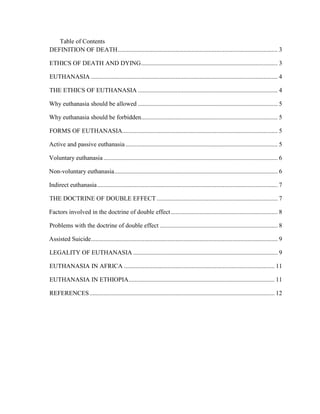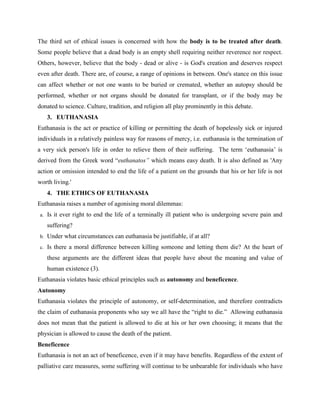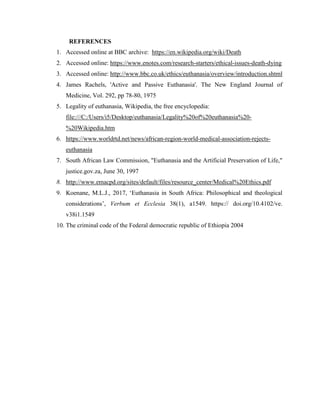The document discusses the ethics of death and dying, focusing on euthanasia, which is defined as the act of ending the life of hopelessly ill individuals to relieve suffering. It presents arguments for and against euthanasia, the various forms it can take, and the ethical dilemmas involved, including issues of autonomy and beneficence. The legal status of euthanasia across different countries is also examined, indicating a trend towards acceptance in certain regions.











